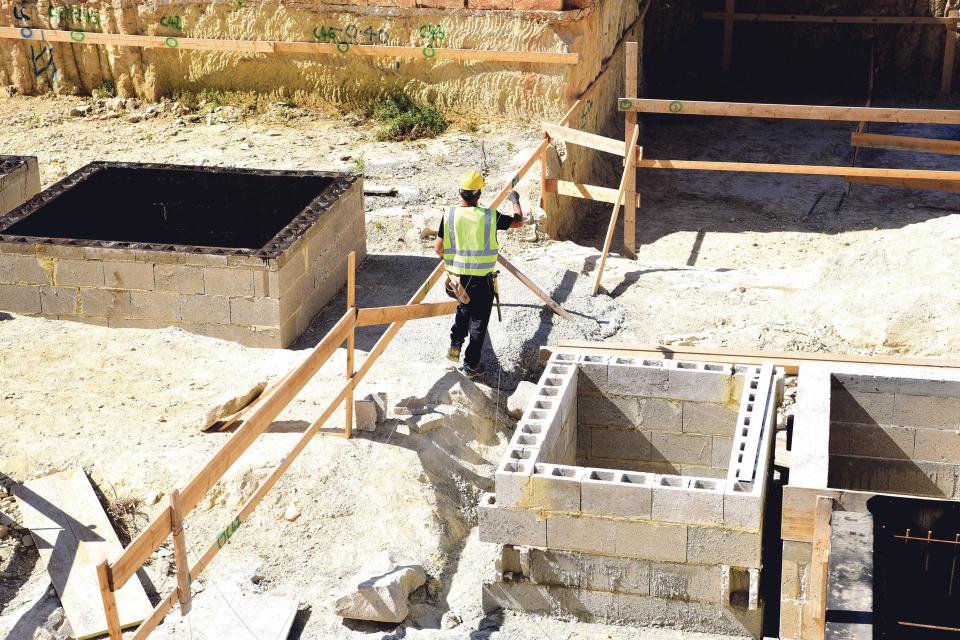The law must change – Angelo Xuereb
ARTICLE

The following are my comments on how we can improve the new construction laws for the benefit of all those concerned. They are based on my 45 years of practical experience in the construction industry.
During my tenure as president of the Federation of Building Contractors (FOBC), we had presented our concerns and published an article in the Times of Malta on January 7, 2007, with our recommendations. Most of its content is still applicable today, although the challenges now are more acute due to developments requiring deeper excavations.
For more than 12 years, we have been highlighting the need to change the law – specifically Section 439 of the Civil Code – stipulating a 76cm distance of excavation from third-party walls. This law came into force over 150 years ago (1868) with the purpose of protecting the stability of wells, not adjacent buildings, and has remained unchanged since.
The law states: “It shall not be lawful for any person to dig in his own tenant, any well, cistern or sink, or to make any other excavation for any purpose whatsoever, at a distance of less than 76 centimetres from the party wall.” In that era, developers would have had no real reason to cut rock to construct basements since in those days there was ample space for development.
Today, the circumstances have changed, and it is imperative that structures are designed within the boundaries of each individual site while making the necessary allowances for the stability of nearby structures.
Ultimately, having a blanket requirement to leave a gap of 76cm from the third-party wall up to the neighbour’s foundation does not serve to protect neighbouring structures. This leads to the practice of either having the overlying structure supported by the dividing wall or creating a huge cantilever structure at ground level.
The problems usually present themselves when the adjacent property decides to repeat the same methodology, resulting in the foundation of the dividing party wall being left in a very weak and dangerous state. The fragile, narrow rock left in between the properties is prone to give way under heavy loads.
Similarly, the law – Section 407 of the Civil Code – regarding the thickness of the party walls, must also change. It does not make sense any more to have 230cm- or 380cm-wide walls. These walls are being abused by irresponsible chasing horizontally on both sides.
In short, these two laws, namely Section 407 and 439 of our Civil Code related to the party wall, must be amended to reflect today’s realities.
While I agree that all sites must be supervised by a Site Technical Officer, I do not agree that there is need to appoint an independent STO. I will explain the reasons for this further on.
Any development needs three entities – the developer, the architect and the contractor.
The developer is not expected to be technical, which is why an architect is appointed to provide direction on all technical matters.
The architect is responsible for the design of all the drawings and structures, including excavation, foundations and other technical matters. The architect may appoint other specialists such as geologists, structural engineers and interior designers, where necessary.
It is a known fact that architects are normally involved in several projects being developed simultaneously, which means it is impossible for them to physically attend each site every day. But the architect should have the obligation to visit the sites periodically and when needed.
It is hard to believe that a hawker dealing with a few hundred euro needs a licence to operate while a building contractor dealing in millions does not need one
The architect may appoint his or her representative to oversee a project and coordinate with the contractor to assure himself/herself that their design is being adhered to properly, with the ultimate responsibility still lying with the architect.
The contractor is responsible for the method statement, construction management plan (CMP) and the construction and supervision of all works related to their contract. This means they need to appoint an STO or a project manager to follow the design and other instructions from the architect.
The contractor’s role is to give a service to the developer based on the design and instructions of the architect.
If the three aforementioned entities adhere to their responsibilities, there should be no need to appoint an independent STO. This additional role would create disagreement and confusion between the three entities that can easily end up with litigations, with the possibility of delaying the project time frames to the detriment of all those involved, including the neighbours.
It is hard to believe that a hawker dealing with a few hundred euro needs a licence to operate while a building contractor or an excavation contractor dealing in contracts worth millions does not need one! With immediate effect, the Building Regulation Office (BRO) should start with their registration, followed by their classification.
This would help inexperienced developers choose the right contractors that fit the size and expected quality of their development. It would be like the classification of hotels based on certain standards. If one chooses to stay in a 3-star hotel, they would not be expecting a 5-star service, and vice versa.
To develop large projects, the requirements are more intense, with more responsibility and a higher price to pay. In this way, the developer has the liberty to choose the classified contractor and receive the service for which he is paying.
In conclusion, developments involve many other trades, but I have kept my short comments only in relation to third party walls, construction/excavation and site responsibility during the construction phase, as well as licensing.
If these are adhered to, I am sure we can have more quality projects, more reliable methods of construction, excavation and, above all, more protection to the neighbours and the surrounding residents.
MORE

 AX Group inaugurates new business centre in Mosta
AX Group inaugurates new business centre in Mosta